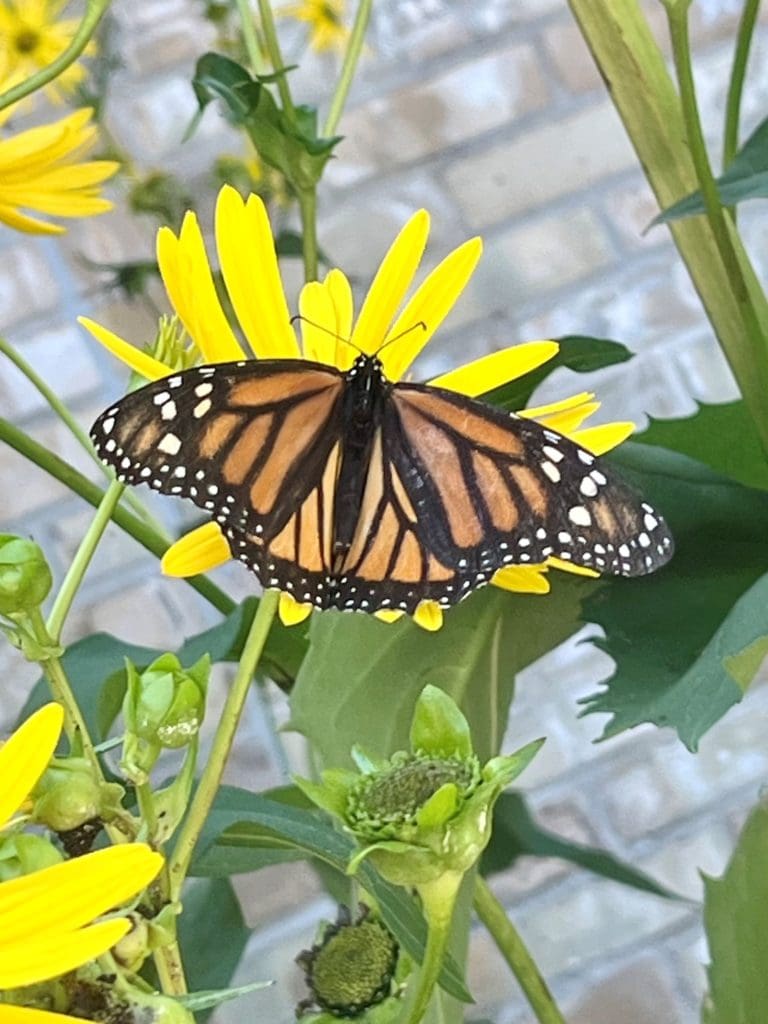By Education Coordinator, Jess Johnsrud

We recently held our monthly Raising a Wild Child program and the topic we were learning about was butterflies. This program is for preschool-aged children (2-5 years old) and an adult and we spend most of our time outside. After learning about the lifecycle of a butterfly, we wandered into the pollinator garden and were thrilled at what we saw! The garden was in full bloom and in full color. We observed butterflies slowly flying around, bees buzzing and frogs frozen still in the pond. The frogs were like statues, trying to camouflage in with the lilies in the water.
We also noted several species of butterflies eating nectar (nectaring) from the cup plants that run along the backside of the Nature Center. I was in awe as I watched viceroys, monarchs, tiger swallowtails, and red-spotted purples flutter and feed on the tall yellow flowers. There were at least 10 of these majestic insects fluttering about! The cup plants themselves were impressive with many growing ten or eleven feet tall and with several blossoms sprinkled about each plant. Even the young children were amazed at all the action and stopped to watch. This is quite significant because these “wild” children like to keep moving! I love when nature stops us in our tracks!
The group continued to walk along the back of the Nature Center toward the driveway. Here we saw a mourning cloak butterfly on the ground, possibly absorbing minerals and water from the damp gravel. Mourning cloaks are a species that overwinter as an adult butterfly, finding shelter in tree cavities and loose bark.
The pond is always a popular destination when we explore near the Nature Center, so our crew wandered to the boardwalk. The kids were again excited to see frogs in the water, but we also noticed a small, delicate blueish butterfly. It was a summer azure nectaring on the tiny purple flowers of the vervain growing near the boardwalk.
It seemed like all of these the butterflies just showed up over overnight, but I think the warm, moist weather in the last month has been beneficial for them. That is one of the nice benefits of summer rain: flowers and butterflies! These two ingredients sure made for a memorable program for some of our youngest learners at the Dunes.
